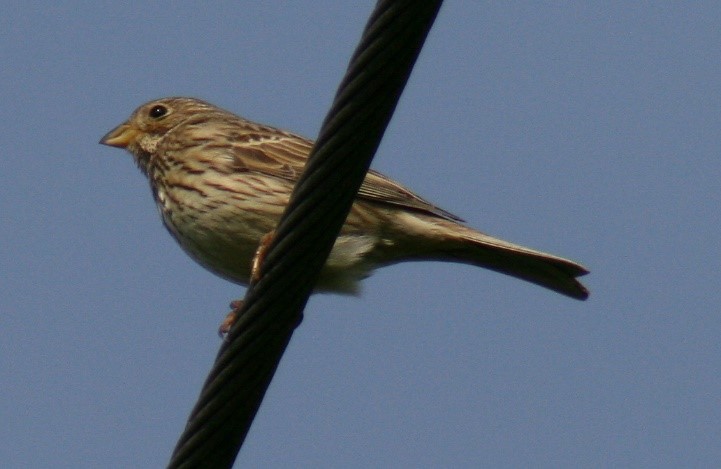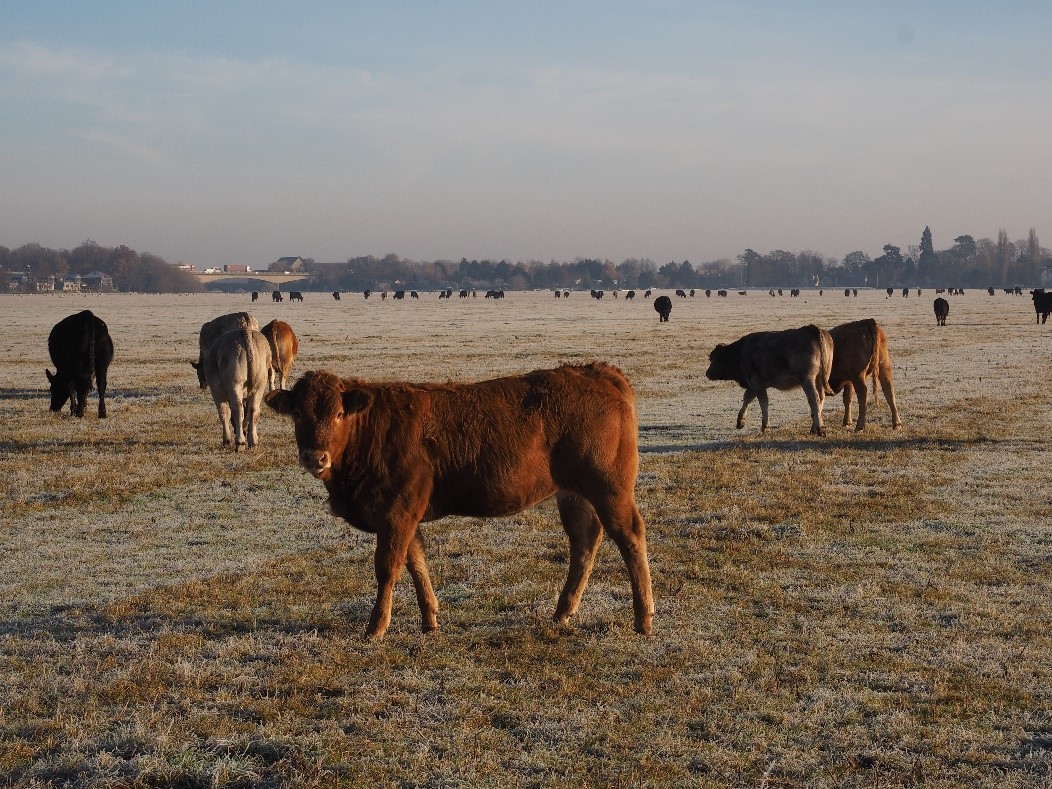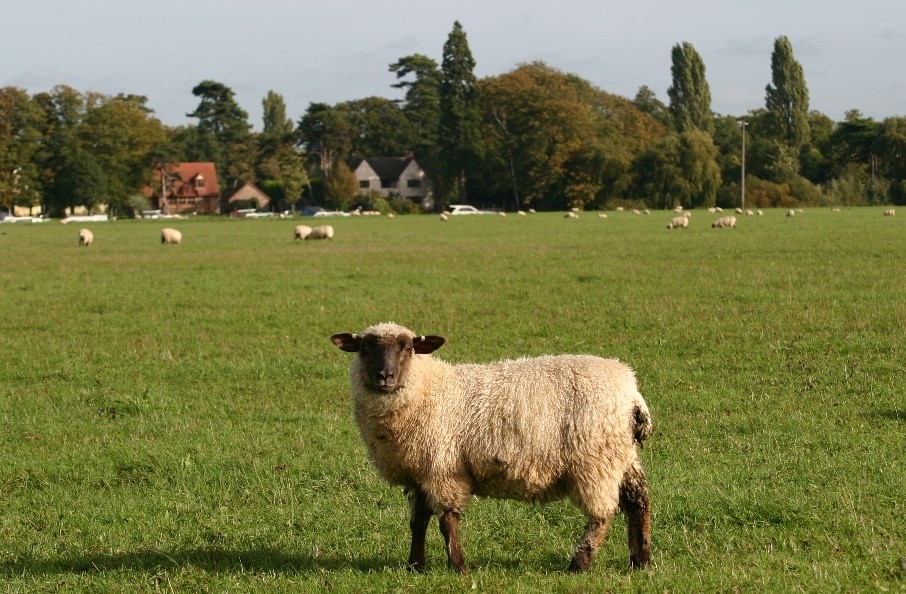We are grateful to Dr Pat Doody for granting us permission to reproduce this note derived partly from a paper published in the Huntingdonshire Fauna and Flora Society Anniversary Report 2008, see: Doody, J.P., 2008. Portholme Meadow. A Celebration of Huntingdonshire’s Grassland. The Huntingdonshire Fauna and Flora Society, 60th Anniversary Report, eds., H.R. Arnold, B.P. Dickerson, K.L. Drew and P.E.G. Walker, 9-16.
Introduction
Portholme Meadow is a large, unenclosed river flood plain meadow, bordered on two sides by the River Great Ouse in the Parish of Brampton, in Cambridgeshire. It is mostly at or below the Ordnance Survey ten-metre contour and is regularly flooded in winter. It has a rich history of human use for hay, sheep and cattle grazing, as a racecourse and an airfield. With an area of 104 ha, it represents 7% of the total UK lowland unimproved hay meadows. It supports a rich flora and is a haven for several less common breeding birds in summer (for example, Corn Bunting and Skylark) now absent from much of the more intensively farmed Cambridgeshire landscape.

The Corn Bunting is one of several breeding birds now very restricted in the intensive agricultural landscapes of Cambridgeshire
It also supports large populations of ducks, waders and gulls when flooded in winter. It is a Site of Special Scientific Interest and recognised internationally as a Special Area of Conservation under the European Union ‘Habitats Directive’.
It was a racecourse and a site for some of the earliest aeroplane flights some 100 years ago. However, its potential for irregular and unexpected flooding has largely protected it from uses that are more intensive. Its conservation value depends on the continuation of a of a traditional haymaking and grazing management regime, as well as regular flooding.
Importance
Portholme Meadow, designated by Natural England (formerly English Nature) as a Site of Special Scientific Interest under Section 28 of the Wildlife and Countryside Act 1981, is an example of a ‘lowland hay meadow’. It is one of only five sites identified as being of international importance under the European Union ‘Habitats’ Directive as a Special Area of Conservation’ for this vegetation type. The designations help protect the site from damaging developments and ensure the maintenance of the nature conservation value of the site. Restrictions include a ban on the use of all artificial fertilisers or herbicides (except for spot-spraying Dock). The nature conservation designations are also likely to deter developments such as gravel extraction and even road building.

Portholme is the only site in Cambridgeshire for rare Fritillaries
Ownership
Today, the London Angling Society, which receives the proceeds of the sale of hay and aftermath grazing, owns most of the site. The Thomas Miller Charity also owns a small portion of the meadow totalling about 4 acres, see map above. This derives from a will of 1681, when Thomas Miller left to ‘the Town of Brampton’… three parcels of land on Port Holme the rent from which should be paid to the Minister of the Parish every year for preaching a sermon on New Year’s Day, and the rest to be distributed to the poor in Easter Week’.
Management
This is perhaps the most important aspect of this site and closely links traditional agricultural use with its nature conservation features valued at national and European levels. The fact that most of the site has not been subject to intensive agricultural use, including ploughing or from the extensive application of artificial fertilizers, has allowed herbs, lost from other permanent but ‘improved’ grassland, to survive. The pattern of management as described in 1772, was probably a continuation of a much older pattern. This continues today with a hay crop and aftermath grazing forming the basis of management.
 |
 |
Cattle and Sheep grazing Portholme in November and February
The ‘main roadways’ are cut prior to the sale and in accordance with the pattern shown on the 1772 enclosure map.

Map 1772 showing land ownership, Thomas Miller Charity land outlined in black
The prescription for timing and stock levels is also very similar to those laid down by the Enclosure Act and described above. Today cattle and sheep often graze the site together although strictly speaking they should graze the site at different times of the year. In 2005 and 2006 the sheep were joined by an unusual visitor, a Red Deer. The hay crop and aftermath grazing are sold each year at auction by Alexanders Auctioneers, Huntingdon, on or around the 15 June.
Portholme Meadow Brampton Parish History and Natural History (PDF)
Dr Pat Doody, Brampton, February 2020